The best grey paint for walls – as chosen by Ideal Home's editors and interior design experts
Discover the new neutral, and which of its many shades and tones is best for your walls

Want to learn how to use grey paint in your home? There’s a lot more to painting than simply selecting your favourite grey shade from a colour chart. From learning how to decorate and what tools to use, to trying out the latest decorative paint effects and understanding different finishes, knowing how to choose your colours and prepare your surfaces sufficiently, and will ensure you get a professional finish on a DIY budget.
We’ve broken down all the facts and shared some on-trend inspirational imagery to provide you with everything you’ll need to get your walls and woodwork looking tip-top in the perfect shade of grey.
Prefer white paint? READ: The best white paint – how to choose the right shade for your walls
We've also asked key editors at Ideal Home to pick out the best grey paints they love to work with on decorating shoots and in their own homes.
How to decorate with shades of grey
Why you can trust Ideal Home

Grey is the new neutral and there’s a shade to suit every room in the house. Breathe new life into your living spaces by choosing a grey combination to suit your style. From moody dark grey to light pastel grey, here we show you how to choose and update your home with grey. It can give a calm and relaxed feel to the home, and is a fresh alternative to the classic neutral palette and acts as a great backdrop to introduce splashes of other colours.
'Grey is a particularly lovely colour as it can be worked into any different style of room,' says designer Vanessa Arbuthnott. 'It can be a dark shade which is modern, dramatic and exciting, or it can be such a light shade of grey which gives off a lot more light into a room. I think many people bypass grey as a colour when picking paint, however it is highly versatile and can be used in many different ways. You can also use greys with so many other colours such as orange, sweet pea pink, all shades of yellow, lime greens… so it is endlessly flexible.'
Shades of grey – Cool versus warm tones
'Greys are hugely versatile – from cool off white shades, through warmer neutral mid tones to the very deep and mysterious. They have more colour and texture within them than straight black – a monochrome scheme of black and white is much more unforgiving than one of shades of slate and clay, which will change subtlety with the light throughout the day, giving them personality and character.
Darker tones of charcoal can be used to add drama anywhere in the home, from a living room to a bedroom or even a small hallway - with clever lighting and mirrors you can create a look that is both strong and atmospheric. These dark greys are also a perfect strong background for small amounts of brighter colour, like chartreuse or mint,' says Judy Smith, Crown's Colour Consultant.
Best for small, light-filled rooms – Pale grey paints
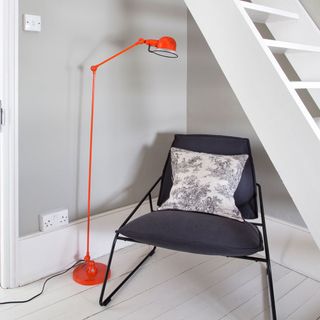
'When choosing a paint colour, it’s important to consider both natural and artificial lighting as colour can vary from room to room. In small rooms with a lot of natural light, pale grey paint can be a simple and stylish alternative to white, since they both create the illusion of space,' explains Paula Taylor, Colour & Trends Specialist for Graham & Brown.
The grey colour also enhances the sense of warmth, making it a perfect choice for cosy light-filled rooms. Warm pale greys add sophistication and can be very versatile with an almost chameleon effect making these tones blend perfectly with any colour.'
Ideal Home's pick of the best pale grey paints
Buy now: Cornforth White Estate emulsion, £46.50 for 2.5ltrs, Farrow & Ball
Buy now: Gray Owl Aura matt emulsion, £26.50 for 0.94ltrs, Benjamin Moore
Buy now: Pale Dove Grey matt emulsion, £35 for 2.5ltrs, Laura Ashley
Best for north-facing rooms with yellow undertones – warm grey paints
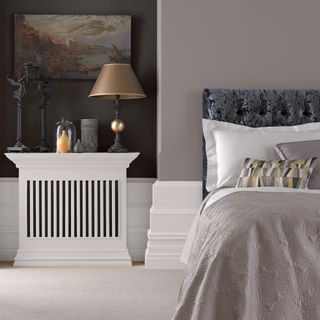
North facing rooms, whilst getting the sun in the morning, have a slighter colder light throughout the rest of the day. As such, they can benefit from using a warmer tone. An earthy grey would be good here, for example, Crown’s Smoked Glass Matt Emulsion.
'In Sweden, blue toned greys are very popular in the north facing rooms,' says paint expert, Annie Sloan. 'That type of grey looks lovely with cream, a bit of pink and you can even add a touch of gold.'
Ideal Home's pick of the best warm grey paints
Buy Now: Smoked Glass Breatheasy Matt Emulsion, £18 for 2.5ltrs, Crown
Buy Now: Elephant’s Breath Estate emulsion, £46.50 for 2.5ltrs, Farrow & Ball
Buy Now: French Grey Intelligent matt emulsion, £50 for 2,5ltrs, Little Greene
Best for south-facing rooms with blue and grey undertones – cool grey paints
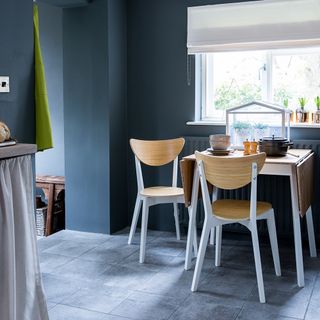
'Rooms that are south-facing are full of light throughout the day making them warmer in tone,' says Paula Taylor, Colour & Trends Specialist for Graham & Brown. 'To maximise the space you have, grey colours with hints of soft blue are a great way to accentuate the room even further as they contrast the natural warm tone. A bluey grey shade helps bring depth and dimension to your wall whether it has a rich, deep finish or a cooler tone. Calming and soothing to the eye, these colours add a gentle spritz of freshness to sunny rooms.'
Ideal Home's pick of the best cool grey paints
Buy Now: Dulux Chic Shadow matt emulsion, £16 for 2.5ltrs, B&Q
Buy Now: Manor House Gray, £45 for 2.5L, Farrow & Ball
Buy Now: Mid Wedgwood Marble matt emulsion, £46 for 2.5L, Mylands
How to choose the right grey paint – the bottom line
Interiors writer, consultant and best-selling author of Shades of Grey and How to Decorate Your Home with Style, Kate Watson-Smyth sums it up beautifully: 'A couple of years I ago I visited a client whose south-facing bedroom was painted a beautiful barely there shade with a hint of blue. The sun poured in and the room looked stunning. We went next door to the north-facing room she wanted help with. It was cold and unwelcoming. I asked what colour it was. The same, came the frustrated reply.
'And that is the problem,' Kate continues. 'North-facing rooms have a steady light all day but it will have a blueish tinge. Add in a cold grey and the room will feel and look cold. So you need to balance that by choosing a warm grey with yellow undertones. Try Elephant’s Breath by Farrow & Ball. If you have the Little Greene paint chart the colours start warm and get colder as you move along. Greys with blue undertones may also look lilac and purple in this light.'
'Now, if you put the warm Elephant’s Grey in a south-facing room with a warm golden light it will turn beige,' Kate explains. 'So you need to put the cooler greys in here to balance the yellow light. Once you understand that it should narrow down the choices.'
'Most greys are made up of several different colours. Have you ever tried looking closely at a grey pavement? You will see everything from pink and yellow to blue and green. That is why grey is hard. Of the 28 shades of grey in the Little Greene paint chart only one – Gauze – is made purely from black and white. It’s not a best seller,' she says.
The best grey paint – More expert recommendations
Choice is a great thing but too much can be overwhelming. A great starting point is the paint company’s own collections. Dulux, Crown and Sanderson all offer mix systems but they also have set palettes to help narrow down the choice.
Paint collections are generally presented in families offering recipes for successful schemes while specialist ranges, such as Heritage colours will help guide you towards shades to suit a period home. Many high quality wallpaper and fabric companies such as Sanderson and Designers Guild also produce their own paint ranges to complement their collections.
'Grey is the perfect neutral and when combined with a splash of colour, it can really bring a room to life', explains Kasia Wiktorowicz, Marketing Communications Manager, Valspar. 'There are so many shades of grey that it is easy to find just the right one to go with your favourite hue.
Try combining pale greys with bright, cheerful shades like greens for a refreshing, zesty feel or pairing with darker tones of grey and saturated orange tones to give your room a cosy atmosphere. A bold colour like yellow combined with a neutral like grey can really make a statement, whilst remaining subtle and contemporary.'
Fig Grey, Zoffany, chosen by Vanessa Richmond, Ideal Home Editorial Director

'I’m not a lover of "pure" greys, says Vanessa. 'Especially mid tones that remind me of 1970s concrete office blocks, or pale shades that can turn chilly and lilac-tinted in some lights. I prefer greys with a warm undertone mixed in, like Fig Grey by Zoffany, which has a rich purple in it for a super-snug living room or a cocooning bedroom.'
'I also like Fired Earth’s classic Plumbago, which works beautifully with all shades of blue.'
'If you’re a fan of neutrals, you can get a really calm, cosy look by putting a brown-toned grey on the walls that’ll offset our cold, northern European light – Farrow & Ball has lots of these. Then layer the room with flooring and textiles in a free-for-all mix of greys, browns, creams and whites. It creates a really comfortable, textural effect.'
Down Pipe, Farrow & Ball, chosen by Kate Watson Smyth, writer and design consultant

'It’s hard to say which is the best paint as everyone’s budget is different,' says Kate. 'It’s true that expensive paint won’t fade so if you’re only planning on doing this once then that’s worth considering. In addition the expensive paints can have many more different pigments which is what makes them change according to the light and they will change according to the time of day as the sun travels across the sky.'
'Down Pipe by Farrow & Ball will always be my favourite dark grey - it’s warm and rich and looks good in both natural and electric light. Dulux Night Jewels is similar. The pale grey you choose will look different in everyone’s house. A friend of mine has Elephant’s Breath. In her house it’s a stunning colour. In mine it’s beige!'
How to get a flawless finish with grey paint
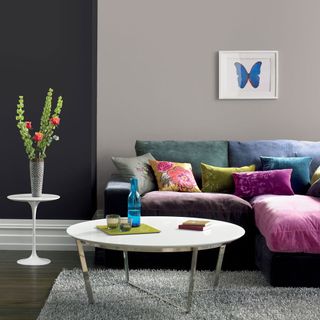
Inspired to paint your room grey? Read: 20 grey living room ideas for gorgeous and elegant spaces
'To get that holy grail of a flawless finish, there is no short cut, preparation is always the key,' advises Judy Smith, Crown's Colour Consultant. 'No paint can fully cover dirty or uneven surfaces, so it’s worth putting in the work at the beginning.'
'Start by washing down the wall with a diluted solution of sugar soap and leave the solution to work for a few minutes. Then with clean water, wipe the surface clean. If there are any cracks or holes in the plaster, first fill these in and then, using sandpaper, methodically work your way around the whole wall. Only once your preparation is done, can you begin painting. Once done, stand back and admire the flawless finish,'
Homebase's Paint Buying Assistant, Chantel-Rose Pidduck explains how she gets that perfect look:
1. Prep to perfection
The first step in achieving a flawless finish is to prep your walls to perfection. Remove nails, screws or hooks from the wall and use a filler product to get rid of any cracks or holes, allowing plenty of time for the filler to dry and set. To ensure you get a smooth finish, rub down any excess filler with sandpaper and wipe the walls clean with sugar water to remove any dirt.
2. Prime like a pro
Using an undercoat or primer will turn your walls into a blank canvas, allowing you to achieve vibrant colours that are the closest match possible to the colour intended by the manufacturer. If you're painting your walls with an oil-based paint then any type of primer will work. However, if using emulsion to cover your walls then you must use a primer or base coat specifically designed to prepare walls for painting.
3. Picture perfect painting
Now you’ve given yourself the perfect base, it’s time to nail the application. When using a roller, be careful not to overload it with paint. It should rotate freely rather than skid over the surface of the wall or ceiling. If this happens, try to take some of the paint out of it. Unhurried vertical strokes will avoid 'splatter' and should be combined with parallel movements that don't extend beyond a comfortable reach.
Quality control
It’s not just the choice of colours that can be confusing. With a large number of established brands on the market as well as mix to order options, trade paints, heritage ranges and eco formulas, there are marked differences in terms of quality, the way the paint applies and, of course, the price. Asked if it is really worth paying extra for quality paint, Rishi Subeathar, managing director of specialist decorating supplier Ray Munn, is adamant in his response.
‘A quality paint has superior pigments and binder, giving better depth of colour and a higher reflective value, plus it will last much longer,’ he says. ‘Cheap paint can have a plastic, dull look - quality paint gives a much richer finish.’ Consider coverage too. Richer pigmentation doesn’t automatically give better coverage so do check the figures on the tin - 12 sq m per litre is average but some premium paints offer better.'
Are you ready to embrace the shades of grey paint trend?
Get the Ideal Home Newsletter
Sign up to our newsletter for style and decor inspiration, house makeovers, project advice and more.

Amy Cutmore is an experienced interiors editor and writer, who has worked on titles including Ideal Home, Homes & Gardens, LivingEtc, Real Homes, GardeningEtc, Top Ten Reviews and Country Life. And she's a winner of the PPA's Digital Content Leader of the Year. A homes journalist for two decades, she has a strong background in technology and appliances, and has a small portfolio of rental properties, so can offer advice to renters and rentees, alike.
-
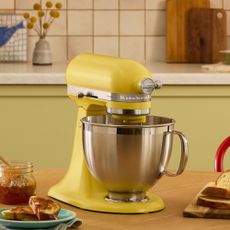 KitchenAid just confirmed that this retro kitchen appliance colour is very much back in fashion in 2025
KitchenAid just confirmed that this retro kitchen appliance colour is very much back in fashion in 2025They're the latest brand to embrace the vibrant sunny shade
By Rebecca Knight
-
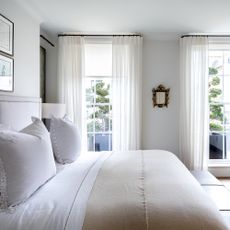 Is a mattress protector *really* necessary? Bedding experts explain if investing in a protector is worth it, or not
Is a mattress protector *really* necessary? Bedding experts explain if investing in a protector is worth it, or notOur bedding experts explain what a mattress protector is, and if you really need to add one to your bed. Spoiler alert: yes, you do
By Amy Lockwood
-
 How to make a wire wreath - adorn your home with this unique spin on a spring wreath
How to make a wire wreath - adorn your home with this unique spin on a spring wreathThis DIY decoration can be used every spring for a stylish display
By Anna-Lisa De'Ath